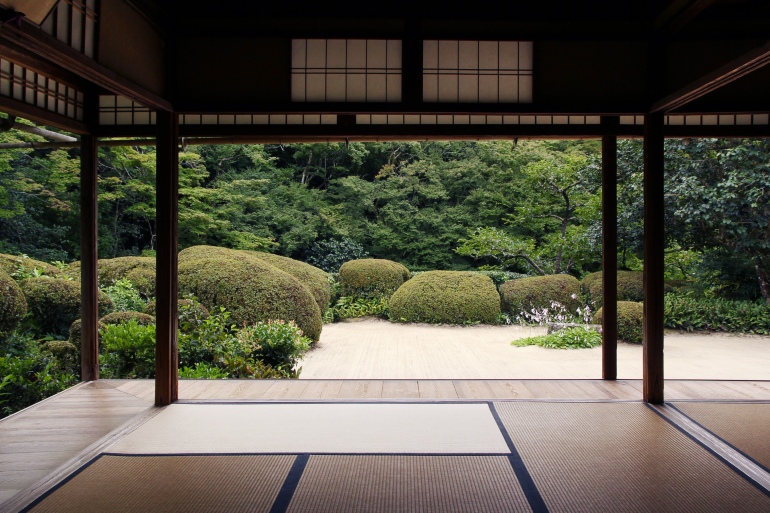The Japanese Way of Decluttering the Home
 Swadhin Roy Sunny
Swadhin Roy Sunny
Have you ever tried to reflect on the items surrounding you? Everything in a particular space has a background, a narrative, which symbolizes a part of one’s life. In Japan, there is a certain relationship with the mess that helps them express themselves, and as a result, one more sociological aspect diverts their attention to the things they easily take for granted. What if there is more to mess than simply chaos, as in the experiences, feelings, backgrounds, and tales of everyone who has ever existed?
Consider entering a room from the Disney animated film Spirited Away, and every object inside the room has attachments. Chihiro, the heroine of the film, goes to another world where lots of things when seen, create memories that can be happy, sad, or scary. Everything he sees, from a spirit to a simple little thing, reminds one of their collection of items that evoke happiness. As you look, you might ask: Which possessions of theirs make them feel at peace? Which objects represent their history?
This belief goes hand in hand with the idea of mono no aware, meaning the bittersweet beauty of transience. Think of the sweetest times you have ever had. Are they associated with objects? Maybe a tactile belonging, like a worn-out picture, a lovingly penned-out message, or a souvenir from a beloved place? The Japanese also share that everything is for a limited time. Hence the value of time and the things related to that time appear. What if they did not see cluttered spaces as a burden and instead saw them as a memoir of one’s life?
In the “Shogun”, a web series, the material belongings of the characters serve as a social history of the people in the show. The web series based on James Clavell’s book tells the story of an English navigator in Japan, frothing the audience with the cultural background. Objects such as simple swords or elegant tea ceremony utensils symbolize not only rank and position but also the burden of legacy and individual past. When watching the series, keep in mind how important those things surrounding them are; it will help to understand how the main characters’ things define them. Most likely, personal documents, such as a favorite textbook or a souvenir bought during an exotic trip, tell much about their hobby and dreams.
As you sift through your belongings, ask yourself, What do they truly value? The fantastic news is that this journey into one’s self is, more often than not, a remarkably constructive experience. The need to declutter would mean avoiding a set pattern of decluttering but instead taking time to interact with each item. It’s important that it should bring about happiness, or is it more of a chore? As such, you create an environment that is as genuinely tailored to your temperament as it is beneficial for your health.
Think about how this process modifies your surroundings. Imagine your home filled with those objects that would make your spirit vibrate, similar to the dolls of Chihiro in Spirited Away. Every single item, therefore, represents your story. While now you interact with your clutter, is there happiness and reminiscence hidden there along with other things?
The Japanese point of view also helps them understand that the aesthetic value of an object is often determined by the feelings it evokes, so they obtain a renewed relationship with the environments they experience. It also revealed that friends and family could be used to build community while on this journey. Sharing thoughts about items that you like or the stories that are associated with them is possible to start a great conversation. Which of the items do you feel apprehensive about losing, and which of the items do you wish to share with someone else?
The relations between characters in Shogun are focused on the subject of objects, as cultural and individual histories are narrated through belongings. That is why the connection highlights that people’s belongings are the key to understanding who they are today.
Lastly, the life-changing magic of clutter, from the perspective of the Japanese, is about the story that an object has been telling. The opportunity to move away from the functional perspective of spaces and pay attention to their affective potential opens a way to creating environments that would enhance who they are. Therefore, go ahead and embrace the museum of all things mess that makes life in the 21st century what it is. What history is reflected in your items? In what ways do they help you to define who you are?
The goal is not simply to clean up; it is to be silent to understand the story of the objects they own. Every piece can help them reunite with part of themselves, leading towards change and new opportunities. Are you ready to find out what the waste of your life can do to you?
Reference:
1. https://aeon.co/essays/the-life-changing-magic-of-japanese-clutter
Subscribe to my newsletter
Read articles from Swadhin Roy Sunny directly inside your inbox. Subscribe to the newsletter, and don't miss out.
Written by

Swadhin Roy Sunny
Swadhin Roy Sunny
I am Swadhin Roy Sunny, a highly motivated STEM enthusiast, mental health advocate, and young researcher. As an international award-winning student, I am dedicated to making a positive impact through science and technology. I founded Monobadh, a non-profit organization focused on mental health awareness, and I am also a content creator on YouTube, sharing my passion for learning and discovery. As a young entrepreneur, I am committed to fostering innovation and growth. I enjoy writing about travel, life philosophy, and physics, and I am always eager to connect with like-minded individuals and professionals.